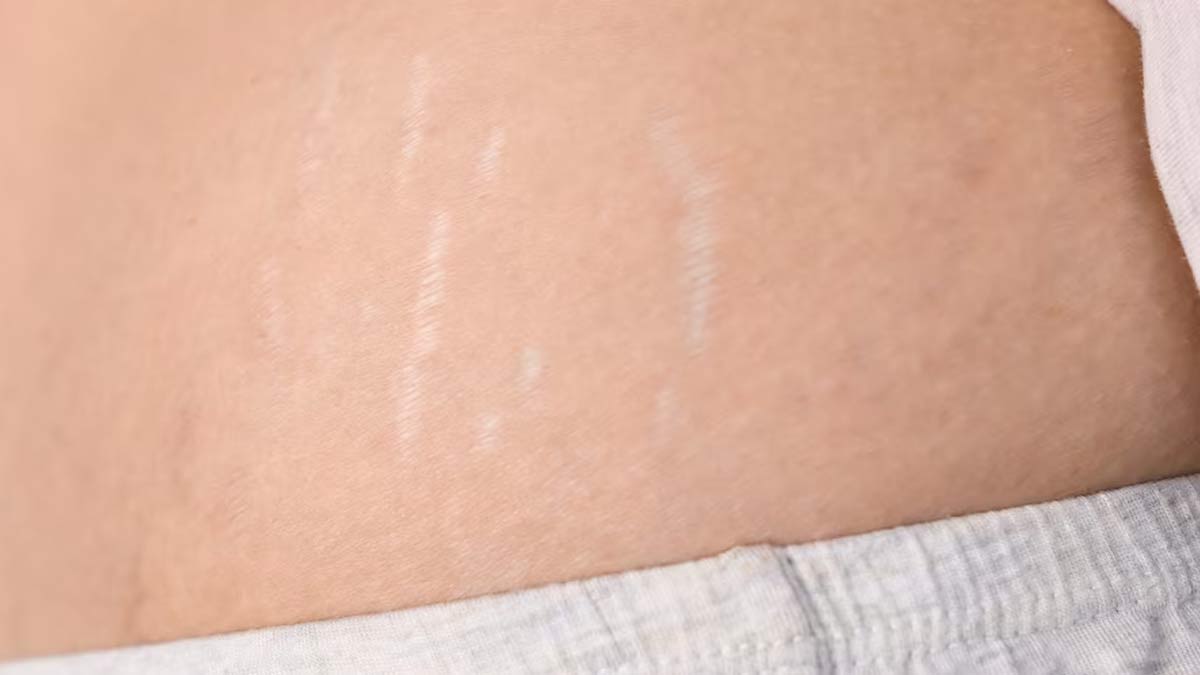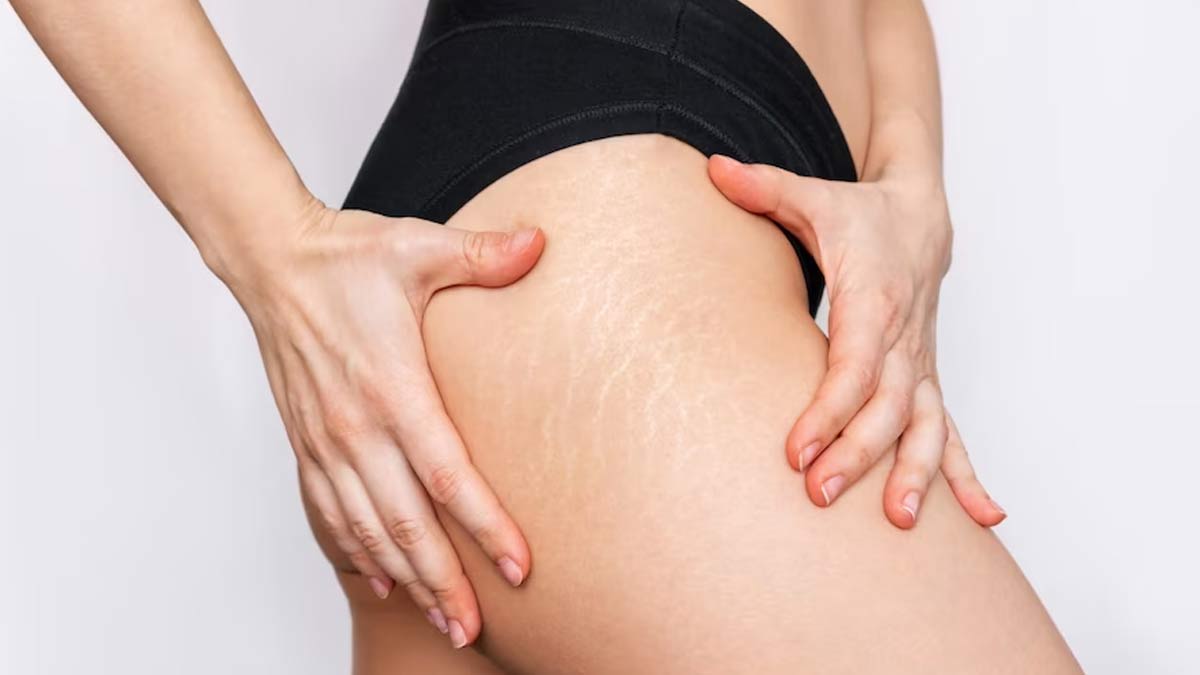
Stretch marks are one of the most dreaded skin changes that commonly appear on areas of the body that undergo significant stretching and tearing. This includes the abdomen, thighs, hips, breasts, and buttocks. While they’re harmless, it is important to understand their causes to address the concerns people may have. We spoke to Dr Rishabh Raj Sharma, MD Dermatology, Senior Resident, Noida International Institute of Medical Sciences and Hospital, Noida International University, who shed light on the same and told us everything we needed to know about getting rid of them.
Common Causes Of Stretch Marks

Stretch marks are a type of scar that forms when the skin experiences rapid stretching or shrinking, causing the underlying collagen and elastin fibres to break. Factors such as growth spurts that happen in puberty, pregnancy, rapid weight loss or gain, and weight training when you have rapid muscle growth can all contribute to the development of stretch marks, according to the American Academy of Dermatology Association.
Dr Sharma said that increased stress on the skin or syndromes like Cushing's syndrome, brought on by elevated cortisol levels secreted by the adrenal gland, and Ehlers-Danlos syndrome, a condition that causes the skin to become extremely elastic, could also lead to the formation of stretch marks.
Moreover, abnormal collagen development or a blockage of collagen brought on by medication can also result in the condition.
A study published in the Journal of Cosmetic Dermatology also found a strong link between adequate vitamin D levels and a reduced risk of stretch marks. While researchers noted that vitamin D levels didn't directly influence the presence or severity of stretch marks, women with sufficient levels of the 'sunshine vitamin' were significantly less likely to have stretch marks compared to women with deficient levels.
How To Get Rid Of Them?
Stretch marks are usually harmless and are mostly associated with cosmetic concerns. Hence, Dr Sharma listed some of the most common procedures used to get rid of stretch marks while advising patients to consult a dermatologist before resorting to any measures.
Laser therapy: This can lessen the visibility of stretch marks and assist in boosting the synthesis of collagen.
Microdermabrasion: It is a technique to enhance the texture and look of the skin by gently exfoliating it.
Chemical peels: By eliminating the outermost layer of skin, they can help lessen the visibility of stretch marks.
Hyaluronic acid or retinoid (also referred to as tretinoin) creams: These could be helpful for recently developed stretch marks. However, avoid using retinoid creams while pregnant because they could be harmful to the unborn child, advised Dr Sharma.
Also Read: Korean Skincare Routine: Why It May Not Suit Indian Skin Type?
Home Remedies

Besides medical procedures, you can also resort to natural remedies to treat stretch marks. These include:
- Regularly apply cocoa butter, almond oil, or coconut oil to maintain skin hydration and suppleness.
- Support skin health and elasticity by consuming a well-rounded diet abundant in vitamins and minerals.
- Include lean proteins, such as those found in salmon, tuna, beans, egg whites, peanuts, oysters, chicken, turkey, and lentils, to avoid stretch marks and increase collagen.
- Increase the intake of carrots, Brussels sprouts, broccoli, spinach, and kale greens.
Conclusion
Stretch marks occur as a natural response to rapid changes in skin, such as intense stretching and tearing. These can be caused by pregnancy, obesity, and hormonal changes. While they are harmless and often fade over time, they can also cause cosmetic concerns for some people. Several procedures, such as laser therapy, microdermabrasion, and certain creams with hyaluronic acid or retinoid components, can help get rid of the condition. Additionally, certain home remedies can also help. The key is to address the causes of stretch marks and speak with a doctor about them.
Also watch this video
Read Next
Almond and Flaxseed Face Cleanser: Here Are Its Benefits And How To Make This Cleanser At Home
How we keep this article up to date:
We work with experts and keep a close eye on the latest in health and wellness. Whenever there is a new research or helpful information, we update our articles with accurate and useful advice.
Current Version